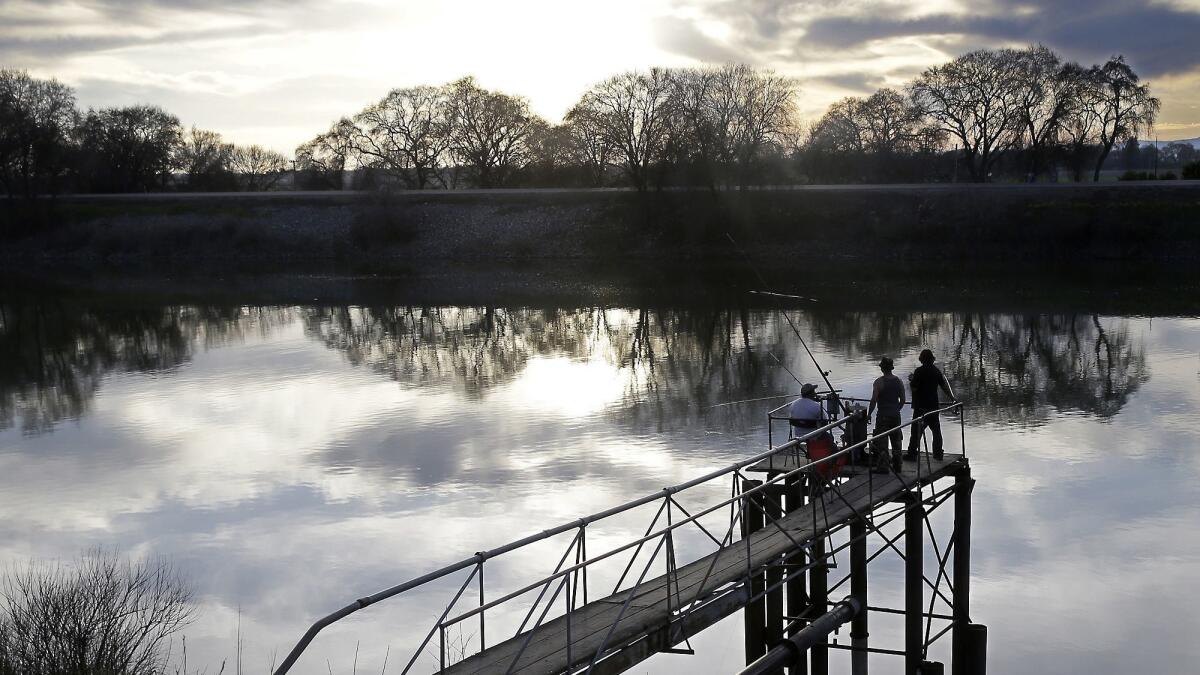Editorial: The delta tunnels plan is costly, risky and unfair to L.A. Itâs also the right thing to do

In voting Tuesday to pay two-thirds of the cost of building two tunnels to divert river water around the Sacramento-San Joaquin River Delta and direct it southward, the Southern California Metropolitan Water Districtâs board bought into a plan thatâs costly, risky, uncertain and unfair. And it is taking its ratepayers with it, because they will have to shoulder the costs on their water bills.
But it was the right move nevertheless â for the ratepayers as well as for the agency. Despite the costs, the risks and all the rest, the California WaterFix, as the tunnel project is known, remains the cheapest and least speculative option for Southern California to secure a continuing water supply as the combined effects of climate change, environmental restoration mandates and increasing demands by other states and nations slow the flow of imported water to the region.
It is a shame that the project will not unify the state the way its designers originally envisioned: as an integrated plan serving and supported by cities, agriculture, the north and the south. Large San Joaquin Valley agricultural districts rejected participation late last year, leading the state and the MWD to consider a single-tunnel alternative to reduce costs. But a scaled-back project would also severely reduce benefits.
So the MWD moved forward with the two-tunnel option â even though Los Angeles and San Diego, the stateâs two largest cities and urban water users, voted in vain against the proposal at Tuesdayâs meeting, each for its own reasons.
In fact, the reasoning behind Los Angelesâ stance â its desire to rely less on imports from distant mountains and rivers and more on water that is recaptured and reused locally â is wise and properly motivated. Mayor Eric Garcetti has set an ambitious and laudable goal to obtain half of the cityâs water locally, from stormwater runoff and wastewater recycling, by 2035.
Even if we use more locally acquired water, the region will still have to contend with a shrinking supply from the diminished Colorado River.
But despite the new approach, the city is woefully behind in developing its local water capability. It was deterred for too long by the foolish âtoilet-to-tapâ pushback of the 1990s, in which politicians exploited residentsâ unfounded fears that recycling would feed sewage into our faucets, showers and swimming pools. And the cityâs Department of Water and Power, in that era, was only too happy to keep its vision laser-focused on importing mountain water. Itâs good that such thinking has faded, and that real effort and money are going into local storage and reuse.
For the present, though, Los Angelesâ water portfolio is divided up pretty much the same way it has been for decades, with less than 20% of water acquired locally, only a trifle recycled, and the vast majority of it imported. In fact, imports by the Metropolitan Water District have increased, as the city has taken less from its own Eastern Sierra aqueducts to repair the environmental damage the city had been causing in Mono Lake and the Owens Valley.
Reducing imports over the long term is the right goal. But imported water from the delta will always be part of the mix. Even if we use more locally acquired water, the region will still have to contend with a shrinking supply from the diminished Colorado River, which also is affected by climate change and is being increasingly tapped by other Western states that have rights to it. Weâre also leaving more water in place in the Owens Valley (except for deluge years like 2017).
It is telling that, while Los Angeles board members were voting ânoâ on the delta tunnels, Orange County â the stateâs leader in wastewater recycling and reuse â was voting âyes.â Its representatives recognize the need for a reliable import system alongside a modern local-water program. The same is true for other parts of Southern California that are leaps and bounds ahead of L.A. on stormwater capture. It is good that Los Angeles is trying to catch up, but it should learn from the experience of its neighbors.
And part of that experience is that the tunnels project, despite the $4.80 that Met predicts it will add to the monthly bill of Southern California ratepayers, is less expensive than recycling, desalination and other local projects.
The unfairness is that a project that was supposed to be financed by many of the stateâs water users will now be paid for, if it moves forward, just by Southern California ratepayers. But that doesnât mean that itâs not still the best deal for those same ratepayers. Itâs certainly better than merely standing by as their water connection to the rest of the state dries up.
Follow the Opinion section on Twitter @latimesopinion and Facebook
More to Read
A cure for the common opinion
Get thought-provoking perspectives with our weekly newsletter.
You may occasionally receive promotional content from the Los Angeles Times.










